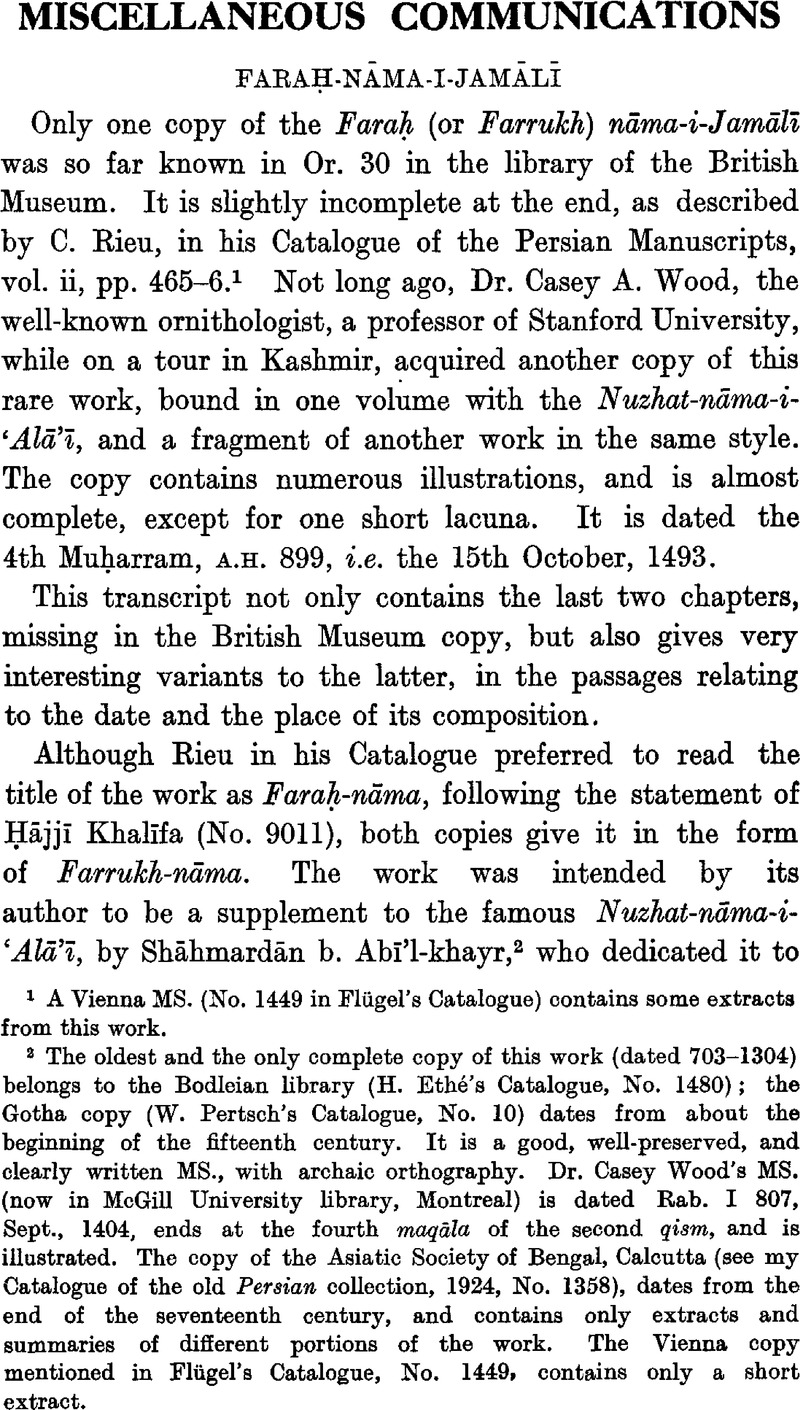No CrossRef data available.
Article contents
Abstract

- Type
- Miscellaneous Communications
- Information
- Copyright
- Copyright © The Royal Asiatic Society 1929
References
page 863 note 1 A Vienna MS. (No. 1449 in Flügel's Catalogue) contains some extracts from this work.
page 863 note 2 The oldest and the only complete copy of this work (dated 703–1304) belongs to the Bodleian library (H. Ethé's Catalogue, No. 1480); the Gotha copy (W. Pertsch's Catalogue, No. 10) dates from about the beginning of the fifteenth century. It is a good, well-preserved, and clearly written MS., with archaic orthography. Dr. Casey Wood's MS. (now in McGill University library, Montreal) is dated Rab. I 807, Sept., 1404, ends at the fourth maqāla of the second qism, and is illustrated. The copy of the Asiatic Society of Bengal, Calcutta (see my Catalogue of the old Persian collection, 1924, No. 1358), dates from the end of the seventeenth century, and contains only extracts and summaries of different portions of the work. The Vienna copy mentioned in Flügel's Catalogue, No. 1449, contains only a short extract.
page 864 note 1 Probably instead of Jamālu 'd-dīn.
page 865 note 1 The Nuzhatu'l-qulūb, composed more than a century later, may be added (see the translation, Gibb Mem. Series, p. 121).
page 865 note 2 Cf. the Fārs-nāma-i-Nāṣirī, p. 301, and the Indian Survey Map mentioned above. At present the bulūk is much decayed and depopulated. In autumn, 1928, I was assured at Shiraz that almost all its villages were ruined or abandoned.
page 866 note 1 ![]() In the Nuzhat-nāma, where the heading is the same, the expression is used:
In the Nuzhat-nāma, where the heading is the same, the expression is used: ![]() .
.


